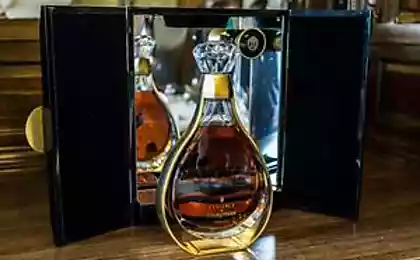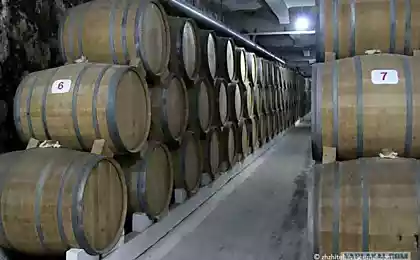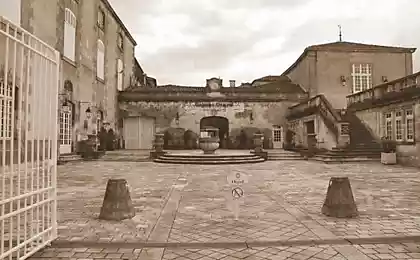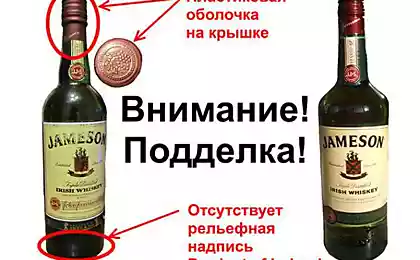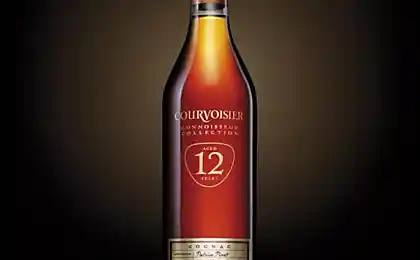613
About brandy
Let's brighten up Friday with something tasty
9 fot letters and
Drinking brandy Dima Tabernacles

The history of cognac vague. European monks sipped strong distillate respected for centuries, honoring him for his medicine, but the Dutch drink popularized by introducing the concept of "drinking pleasure". Due to the export of local wine to the Dutch town of Cognac has been known since the 12th century. In the 16th century because of difficulties with storage during long sea transportation, the Dutch are trying to distill the wine to create a capacious concentrate which can then be diluted with water to give a starting material. As a result, the beginning of the 17th century in Europe there is distilled from wine as a separate drink - more aromatic and potent than wine. Over the next two centuries perfected technology, and the quality is growing. By the mid-19th century, a century brandy booming, but there might be a real disaster. In 1870, together with the opening of the markets of the New World to Europe gets root aphids phylloxera in the company of a microscopic fungus mildew, over the next few years is not immune devouring the vineyards of Europe. For three decades, plant breeders are trying to bring new parasite-resistant varieties by crossing the local vines with American varieties. As a result, traditional French varieties are gradually replaced by more resistant Ugni Blanc grapes. Currently, it is he provides most of cognac production.
Brandy Cellar Kurvaze bookmarked in four levels. My first thought: I want to ask for political asylum here!
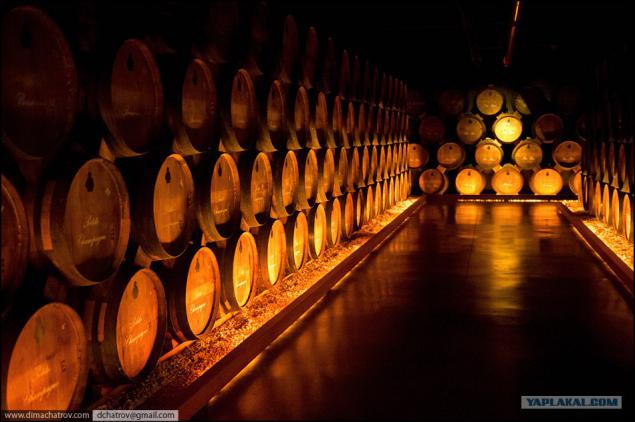
In each oak barrel brewing lives and five hundred liters of brandy. Like is currently a barrel and no one touches it, but there: every year about three percent (ah-ah-ah!) Of its content evaporates through the pores of wood. It is called this part des anges - the proportion of the angels, the best and tasty, they were taking "the heavens" Steamy product is a breeding ground for covering the basement walls of microscopic fungi, staining stone black.

Grande Champagne 1972. Crop year - is just the beginning. In different cognac cellars develops differently. In areas with a high content of moisture alcohol evaporates quickly, making brandy softer. In dry cellars on the contrary, a strong aroma and aggressive. Even the same cognac laid odnovremennno, but on different shelves, has a completely different taste.
Marketing sometimes reaches the point of absurdity, producing a finished product for the Cognac age a hundred years - that it is technically impossible. The best grades of Grande Champagne has a greater potential for exposure, but even for them 40-45 years - is still the limit. Very few people aged more. The age limit can be defined in 70 years, and that in 70 years 90% of the angels drink cognac
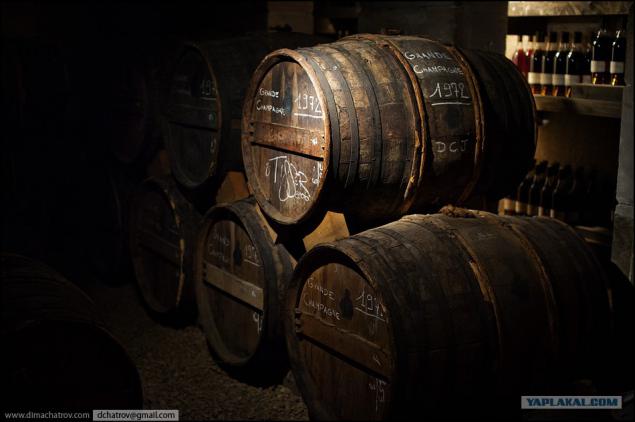
There poetic-sounding, and essentially the same position - cellar master. It is responsible for ensuring that the newly Pledged cognacs, coming under the same names, the taste did not change from year to year. The task enters the master mix (assamblirovat) cognac alcohol exposure in different years, receiving the desired aroma ... the tour we spent Vice President Kurvaze cognac house, speaking in the role of not only guide, but also Masters.
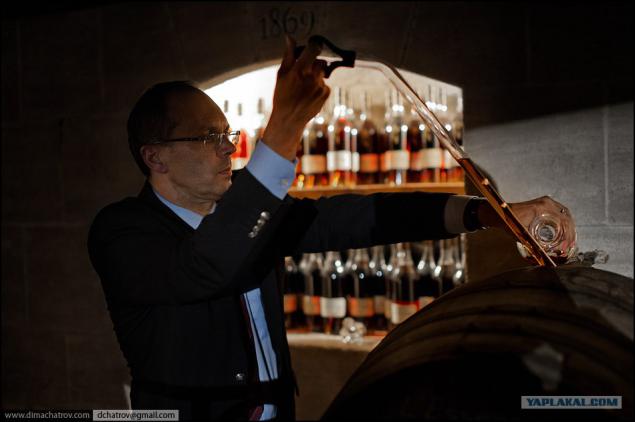
When the cellar master understands that brandy matured and it can not be improved, it gives the command to put the product in the bottle. The glass brandy stops growing and may stand for at least two hundred years, completely without changing the taste. Every respectable cognac basement has a nook where you store such inaccessible angels bottle; places for fun are called heavenly paradise. Although - what really nothing to joke! "In the north-west of Paradise I leave for a couple of days, please ...". Cognac bottles stored vertically.
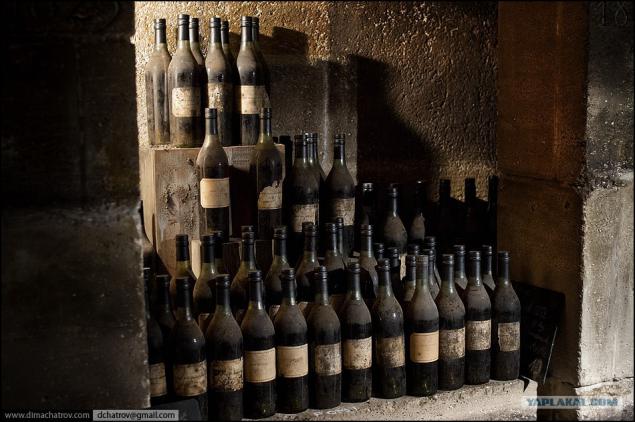
Sip a noble drink in the cold gloom of the cellar ... Romance and gustatory bliss at its highest point!
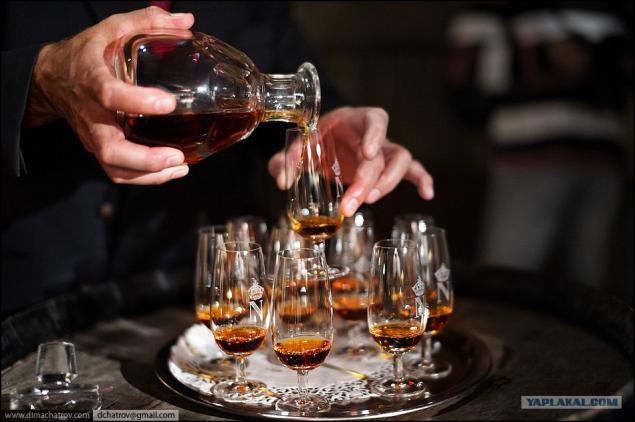
Without words.
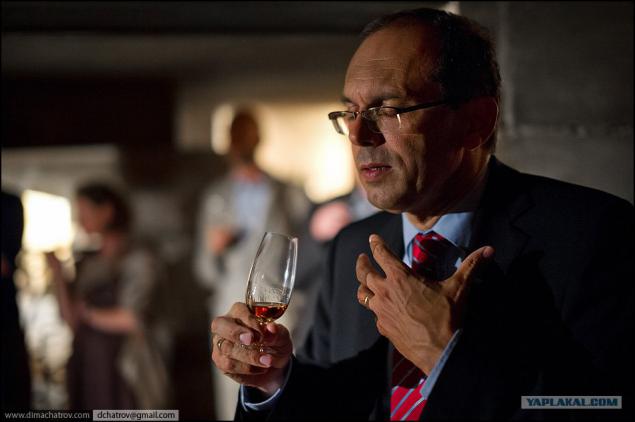
Traditionally brandy was served as a digestif, coupled with combinations of the three "C": Chocolate (chocolat), coffee (café) and cigar (cigare). For once in the first post is not to move away from old traditions, the last to leave today frame the classic accompaniment
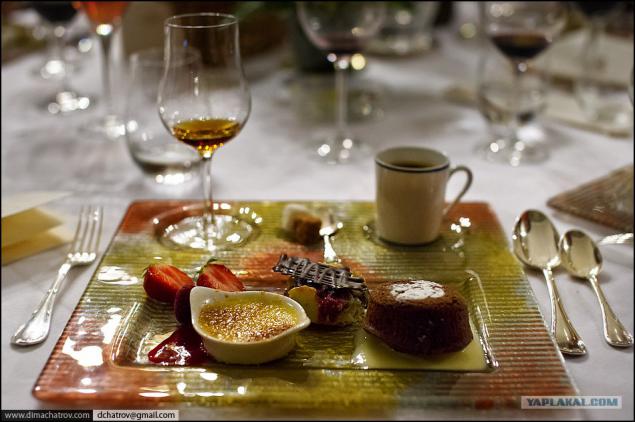
Source:
9 fot letters and
Drinking brandy Dima Tabernacles

The history of cognac vague. European monks sipped strong distillate respected for centuries, honoring him for his medicine, but the Dutch drink popularized by introducing the concept of "drinking pleasure". Due to the export of local wine to the Dutch town of Cognac has been known since the 12th century. In the 16th century because of difficulties with storage during long sea transportation, the Dutch are trying to distill the wine to create a capacious concentrate which can then be diluted with water to give a starting material. As a result, the beginning of the 17th century in Europe there is distilled from wine as a separate drink - more aromatic and potent than wine. Over the next two centuries perfected technology, and the quality is growing. By the mid-19th century, a century brandy booming, but there might be a real disaster. In 1870, together with the opening of the markets of the New World to Europe gets root aphids phylloxera in the company of a microscopic fungus mildew, over the next few years is not immune devouring the vineyards of Europe. For three decades, plant breeders are trying to bring new parasite-resistant varieties by crossing the local vines with American varieties. As a result, traditional French varieties are gradually replaced by more resistant Ugni Blanc grapes. Currently, it is he provides most of cognac production.
Brandy Cellar Kurvaze bookmarked in four levels. My first thought: I want to ask for political asylum here!

In each oak barrel brewing lives and five hundred liters of brandy. Like is currently a barrel and no one touches it, but there: every year about three percent (ah-ah-ah!) Of its content evaporates through the pores of wood. It is called this part des anges - the proportion of the angels, the best and tasty, they were taking "the heavens" Steamy product is a breeding ground for covering the basement walls of microscopic fungi, staining stone black.

Grande Champagne 1972. Crop year - is just the beginning. In different cognac cellars develops differently. In areas with a high content of moisture alcohol evaporates quickly, making brandy softer. In dry cellars on the contrary, a strong aroma and aggressive. Even the same cognac laid odnovremennno, but on different shelves, has a completely different taste.
Marketing sometimes reaches the point of absurdity, producing a finished product for the Cognac age a hundred years - that it is technically impossible. The best grades of Grande Champagne has a greater potential for exposure, but even for them 40-45 years - is still the limit. Very few people aged more. The age limit can be defined in 70 years, and that in 70 years 90% of the angels drink cognac

There poetic-sounding, and essentially the same position - cellar master. It is responsible for ensuring that the newly Pledged cognacs, coming under the same names, the taste did not change from year to year. The task enters the master mix (assamblirovat) cognac alcohol exposure in different years, receiving the desired aroma ... the tour we spent Vice President Kurvaze cognac house, speaking in the role of not only guide, but also Masters.

When the cellar master understands that brandy matured and it can not be improved, it gives the command to put the product in the bottle. The glass brandy stops growing and may stand for at least two hundred years, completely without changing the taste. Every respectable cognac basement has a nook where you store such inaccessible angels bottle; places for fun are called heavenly paradise. Although - what really nothing to joke! "In the north-west of Paradise I leave for a couple of days, please ...". Cognac bottles stored vertically.

Sip a noble drink in the cold gloom of the cellar ... Romance and gustatory bliss at its highest point!

Without words.

Traditionally brandy was served as a digestif, coupled with combinations of the three "C": Chocolate (chocolat), coffee (café) and cigar (cigare). For once in the first post is not to move away from old traditions, the last to leave today frame the classic accompaniment

Source:
